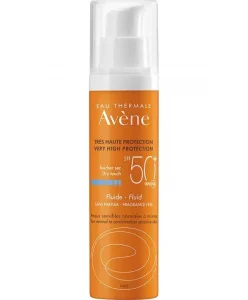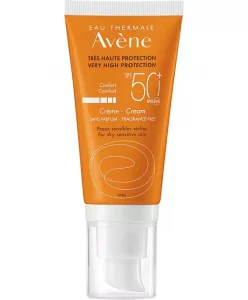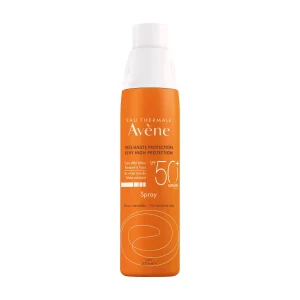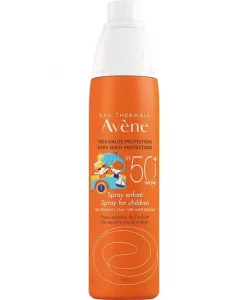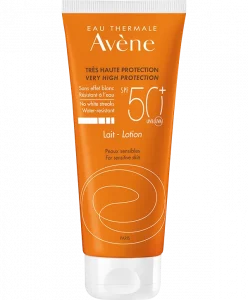
Most people use less sunscreen during the winter because the sun is not as strong and they are less likely to burn. However, even in winter, when the days are short and the sun is often hidden behind clouds, UV rays are present and ready to hit your skin. Thus, you should always wear sun protection cream in winter. In this article from The Dermo Lab, the dermatologist Dr. Shaimaa Abd Al Majeed explains why it’s important not to ditch sunscreen in winter.
UVA rays vs. UVB rays
Before we dive deeper, here’s a quick refresher on UVA and UVB rays.
- UVA Rays:
Ultraviolet A rays, also called “long wave” rays, make up 95% of the rays that reach the earth’s surface. They can penetrate the skin much deeper than UVB rays and are responsible for the signs of aging. They can also trigger skin cancers. UVA rays can pass through glass and clouds.
- UVB Rays:
Ultraviolet B rays, or “short wave” rays, do not penetrate the skin as deeply. They are the ones that cause redness and sunburn. They are most intense from early spring to early fall, and during the sunniest hours of the day. UVB rays are not as likely to penetrate glass as UVA rays, but even though they decrease in winter, many can reach the earth’s surface and are easily reflected by snow and ice. This makes them a greater threat on ski slopes and at high altitudes on sunny days.
Should you wear sunscreen in winter?
One of the most common misconceptions about sun damage is that it can only occur during the summer or in very exposed environments. This is totally false! Sun damage occurs anywhere we are exposed to unprotected UV light, including driving to work on a cloudy or rainy day, and even indoors if we are sitting near a window. According to Dr. Shaimaa Abd Al Majeed, you should protect your skin from the sun even in winter because UV rays are present in winter behind the clouds.
Other key benefits include preventing premature aging and sunburn, preserving collagen and elasticity, helping to fade hyperpigmentation, and ensuring a healthier moisture barrier.
How do you apply sunscreen in the winter?
Sunscreen should be applied as the last step in your skin care routine; think of it as the cherry on top. If you apply anything else over your sunscreen, you risk disrupting the UV filters and making it less effective at fighting UV rays. Reapplying sunscreen throughout the day is also key to protecting your skin.
Over time, sun exposure destroys the protective film provided by the UV filters in our sunscreen. Each formula is different, but a safe rule of thumb for reapplication is about 2 hours of outdoor exposure. However, if you plan to spend your day indoors, applying an adequate amount of sunscreen in the morning should be sufficient.
What are the 2 types of sunscreens?
The active ingredients in sunscreens work by creating UV filters that prevent harmful UV rays from entering the skin. According to Dr. Shaimaa Abd Al Majeed, there are two types of sunscreens: physical sunscreens and chemical sunscreens.
1- Physical sunscreens
Physical sunscreens sit on the surface of the skin and act as a physical blocker by deflecting and scattering UV rays away from the skin, like little mirrors. Because they block UV rays at the surface, physical sunscreens protect against both UVA and UVB rays.
And because physical sunscreens create a physical barrier, they are effective as soon as they are applied, so there is no need to wait.
Physical sunscreens tend to have a white tint and can be visible on the skin. Also, because they settle on the surface of the skin, physical sunscreens can be easily rubbed off, sweated on, or rinsed off, making frequent reapplication necessary.
Physical sunscreens contain the active ingredients titanium dioxide and zinc oxide or a combination of both.
2- Chemical sunscreens
Chemical sunscreens are absorbed by your skin and lodge in the deeper layers. They absorb UV rays and turn them into heat, then release the heat from the skin.
Because UV rays must penetrate the skin to reach these chemicals, chemical sunscreens may not protect against all UVA rays, which still damage the deep layers of the skin.
Since chemical sunscreens take about 20 minutes to be effective, make sure you plan ahead.
Also, direct light makes the chemicals wear off faster, so reapplication must be more frequent when you are in direct sunlight. The heat-releasing nature of chemical sunscreens can be problematic for sensitive and rosacea-prone skin, as well as for people with hyperpigmentation.
Chemical sunscreens can also clog pores and be problematic for acne-prone skin. Chemical sunscreens contain oxybenzone, avobenzone, octinoxate, octocrylene, octisalate, homosalate, or combinations of these.
Dr. Shaimaa Abd Al Majeed indicates that physical sunscreens can be used from birth while chemical sunscreens are safe from 6 months of age.
Which cream is best for sun protection?
Many factors influence the type of sunscreen that is best suited to your needs and uses. Here are some basic tips to keep you healthy and sunburn-free:
a- Look at the ingredients
For physical sunscreens, zinc oxide and titanium dioxide are the most studied for their clinical safety and effectiveness. If you choose a chemical sunscreen, avoid oxybenzone, if possible.
b- Consider usage
If you’re exposed to the sun most of the day, physical sunscreen is the best choice, especially if you have acne, rosacea, or sensitive skin. If you sweat or swim, you will need to reapply physical sunscreen frequently, so in that case consider a chemical sunscreen.
c- Consider your skin type
Dr. Shaimaa Abd Al Majeed states that you need to protect your skin from the sun in winter and summer by using the right form of sun protection for your skin type.
For oily or acne-prone skin, we recommend a fluid texture while for dry skin, choose a creamy texture.
d- Apply correctly
Apply a solid layer of physical sunscreen just before sun exposure for optimal and effective coverage. If you are using a chemical sunscreen, make sure to apply it at least 20 minutes before sun exposure.
e- Reapply
Every sunscreen fades, so reapply at least every two hours. This is especially true when sweating or swimming with physical sunscreens and when exposed to direct sunlight with chemical sunscreens.
f- Don’t skip it
Any sunscreen is better than no sunscreen to protect your skin from harmful UV rays.
Dr. Shaimaa Abd Al Majeed affirms that the best sunscreens are those of the Eau Thermale Avène brand in all its forms. Whatever your skin type, you’ll find what you’re looking for in Eau Thermale Avène products.
Here’s our roundup of the best sunscreens you should be wearing this winter, all of which are available for purchase online now!
For oily and acne-prone skin:
Eau Thermale Avène Very High Protection Fluid SPF 50+
For dry skin:
Eau Thermale Avène Very High Protection Cream SPF50+
For the body:
Eau Thermale Avène High Sun Protection Spray SPF 50+
For children’s sensitive skin:
Eau Thermale Avène Spray for Children SPF 50+
Eau Thermale Avène SPF 50+ Lotion for Children
Does dark skin protect you from the sun?
Dr. Shaimaa Abd Al Majeed points out that dark skin is less affected by the sun than light skin, but that doesn’t mean it’s protected. Therefore, dark-skinned people should also use sunscreen all year round.
Having dark skin protects against some forms of sun damage, due to the increased melanin in the skin. That said, it is still possible for dark-skinned people to get sunburned.
Remember, people of all skin colors must use the best sun protection cream to prevent skin damage.

